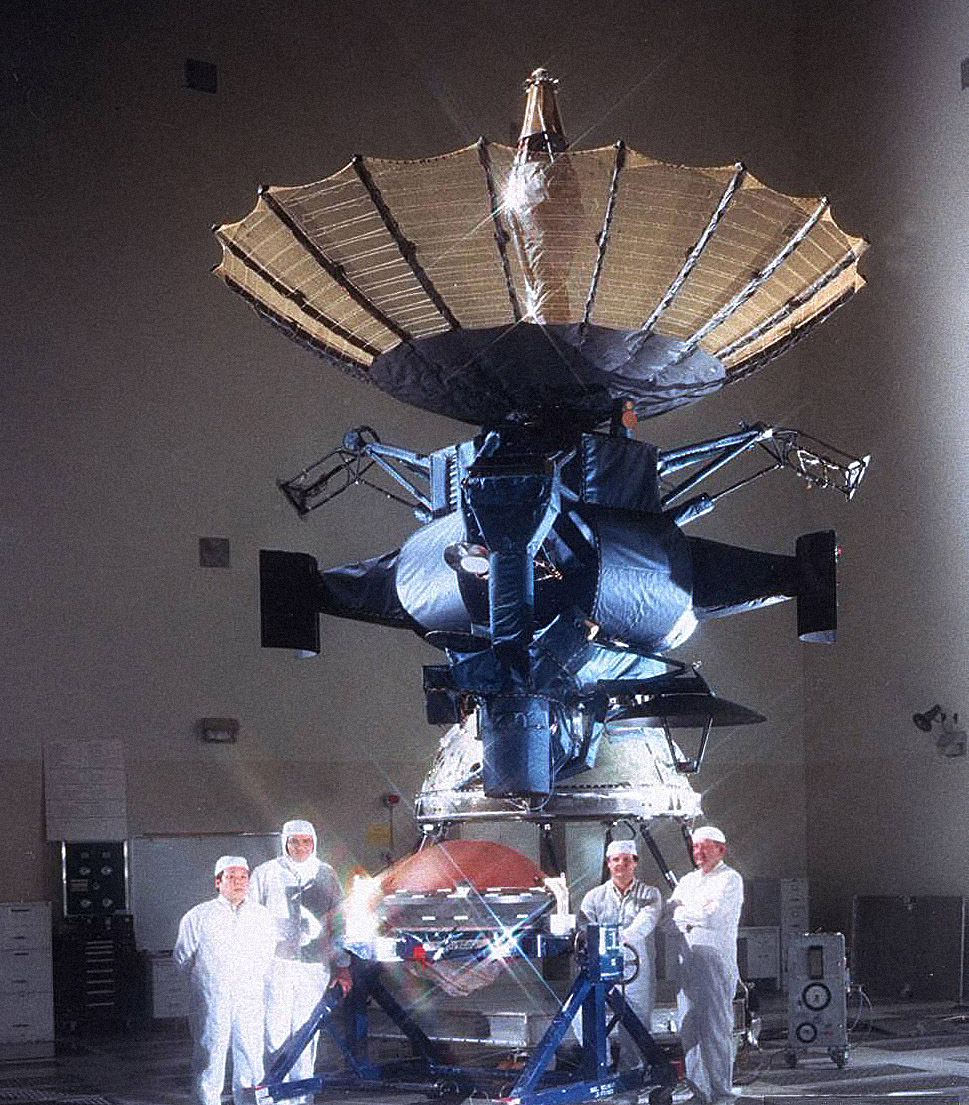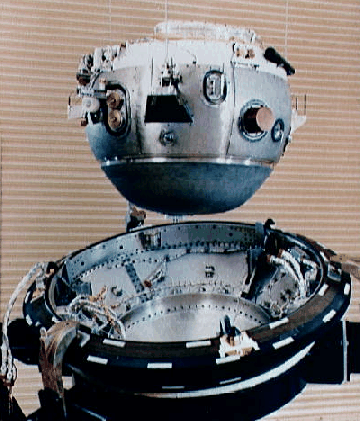https://en.wikipedia.org/wiki/Galileo_(spacecraft)
Galileo was one of the first unmanned satellites to be sent out into deep space. This bad boy was said to have travelled through an asteroid belt (Where asteroids are allegedly far apart), to the planet Jupiter. During its life it travelled a total of 4,631,778,000 km, reaching speeds in the excess of 80,000 m/h.
http://www.crystalinks.com/asteroidbelt1.jpg
"It was designed to use the gravitational force of the moons to bend the path of flight."
Sure, good job on your calculations.
The satellite's parachute probe will descend into Jupiter's atmosphere and send data back to the probe.
Lets see how this happened.
"NASA decided they could do one more mission."
Right, go ahead and talk like they came back for a probe to drop. Just stick with the program guys.
Look at how they depict the probe:
The actual probe:
Looks like R2's head.
Back to Galileo. What happened to our good friend? Well, it started losing itself to radiation problems, mechanical problems, and was running low on fuel, so our good friends at NASA decided to send it down to the same fate as the poor probe.
Reason? They didn't want to crash land on Europa, due to having found strong evidence of an ocean under the moon's icy surface. Right. I don't even want to get into the ridiculous notion of taking on ISS, Mars missions, and several solar missions, over the idea of going back to see if there's a fish in that sea.
https://solarsystem.nasa.gov/galileo/
Meet the great grand daddy. Above we see Pioneer 10! Okay, this is where things get really funny.
Mission launch? March 2, 1972. Duration of the mission? 30 years, and still going!
That's right Galileo, newer, better materials, built more efficiently, ran out of fuel, and suffered wear, so they crashed it. But a 30 year old hunk of junk, with dated equipment, is still going to be sending data back. After 10 BILLION Kms, carrying 70s gear, through -200 degree temperatures, or more, it's still going to send data back through its dish?
Lets just get a little history on the internet, shall we?
In the 70's internet hardly existed. They were not using wireless in the beginning, they were sending data through phone lines. Later this would become known to the public as dial-up.
Later they started developing a system called ALOHAnet, which is really the first wireless connections, which used high frequency. It also only connected some Hawaiian islands. Kind of brings into question how the internet really works, even today. After all, the boxes are connected to wires. The only part we know for sure, that is sending a wireless signal is the box transmitter, which is ALWAYS in close proximity. We'll save that for another post.
From WIKI on Wi-Fi:
In 1971, ALOHAnet connected the Hawaiian Islands with a UHF wireless packet network. ALOHAnet and the ALOHA protocol were early forerunners to Ethernet, and later the IEEE 802.11 protocols, respectively.
- First high frequency tests of wireless internet.
A 1985 ruling by the U.S. Federal Communications Commission released the ISM band for unlicensed use.[3] These frequency bands are the same ones used by equipment such as microwave ovens and are subject to interference.
- AFTER the launch of Pioneer 10, our wonder satellite of 10 billion km data, they finally release ISM.
https://en.wikipedia.org/wiki/ISM_band
Basically microwave oven frequencies, that would later be adapted to the first LOW range equipment, such as blue tooth, and cell phones.
Wi-fi Wiki:
In 1991, NCR Corporation with AT&T Corporation invented the precursor to 802.11, intended for use in cashier systems.
Pioneer 10, in the era of dial-up, when they were birthing wireless cash-register technology, was beaming data back from millions of kilometers away. All from far away planets, in an era before we were trying to figure out if our cell would get a signal over that hill! Not only that, it's STILL sending data back.
I have a problem with believing this.




No comments:
Post a Comment